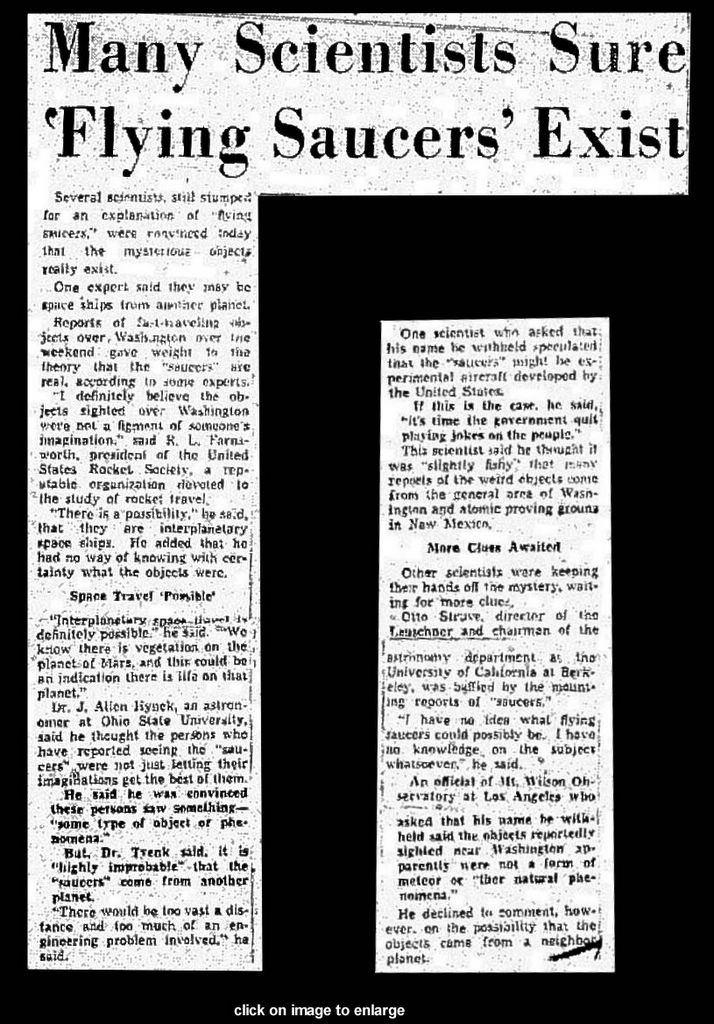Curtis Lemay
Posts: 12969
Joined: 9/17/2004
From: Houston, TX
Status: offline

|
quote:
ORIGINAL: SLAAKMAN
The Drake equation states that:

where:
N = the number of civilizations in our galaxy with which communication might be possible (i.e. which are on our current past light cone);
and
R* = the average rate of star formation per year in our galaxy
fp = the fraction of those stars that have planets
ne = the average number of planets that can potentially support life per star that has planets
f§¤ = the fraction of the above that actually go on to develop life at some point
fi = the fraction of the above that actually go on to develop intelligent life
fc = the fraction of civilizations that develop a technology that releases detectable signs of their existence into space
L = the length of time for which such civilizations release detectable signals into space[5]
R factor
One can question why the number of civilizations should be proportional to the star formation rate, though this makes technical sense. (The product of all the factors except L tells how many new communicating civilizations are born each year. Then you multiply by the lifetime to get the expected number. For example, if an average of 0.01 new civilizations are born each year, and they each last 500 years on the average, then on the average 5 will exist at any time.) The original Drake Equation can be extended to a more realistic model, where the equation uses not the number of stars that are forming now, but those that were forming several billion years ago. The alternate formulation, in terms of the number of stars in the galaxy, is easier to explain and understand, but implicitly assumes the star formation rate is constant over the life of the galaxy.
The number of stars in the galaxy now, N*, is related to the star formation rate R* by
 where Tg = the age of the galaxy.Assuming for simplicity that R* is constant, then where Tg = the age of the galaxy.Assuming for simplicity that R* is constant, then  the Drake equation can be rewritten into an alternate form phrased in terms of the more easily observable value, the Drake equation can be rewritten into an alternate form phrased in terms of the more easily observable value,

The problem with the Drake equation is that all the terms multiply. That means that all the errors sum. That means that if even ONE of the terms is a guess, the whole thing is a guess. And, sadly, most of the terms are guesses - and will remain guesses for millions of years. Plausible solutions to the equation range practically from zero to infinity. That's a guess by any definition. So, it's sort of psudeo-science.
I'm more convinced by the Fermi Paradox:
http://en.wikipedia.org/wiki/Fermi_paradox
Basically, it says that, while the galaxy is 100,000 light years across, it is 10,000,000,000 years old. So, at any reasonable pace of exploration, it shouldn't take more than a few million years to explore the entire galaxy - no more than only 0.1% of its age. That means that if space-faring worlds are common, we shouldn't exist. Because they wouldn't have just arrived to check out our radio broadcasts, they wouldn't even have arrived late enough to turn us all into fish sticks. They would have gotten here when we were still pond scum. At that point, it would have been absurd for them to decide to wait billions of years for the pond scum to turn into Carl Sagan. Rather, they would have said "Look at all this Living Space" - if we can just get rid of this pond scum!".
This is confirmed by SETI's decades of searching without finding diddly-squat. Millions of years from now, after OUR decendents have terra-formed and colonized the entire galaxy, they'll get a hit everywhere they point their radio telescopes.
< Message edited by Curtis Lemay -- 2/17/2013 4:47:11 PM >
|
 Printable Version
Printable Version






























 where Tg = the age of the galaxy.Assuming for simplicity that R* is constant, then
where Tg = the age of the galaxy.Assuming for simplicity that R* is constant, then  the Drake equation can be rewritten into an alternate form phrased in terms of the more easily observable value,
the Drake equation can be rewritten into an alternate form phrased in terms of the more easily observable value, 


 New Messages
New Messages No New Messages
No New Messages Hot Topic w/ New Messages
Hot Topic w/ New Messages Hot Topic w/o New Messages
Hot Topic w/o New Messages Locked w/ New Messages
Locked w/ New Messages Locked w/o New Messages
Locked w/o New Messages Post New Thread
Post New Thread